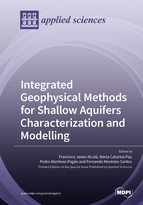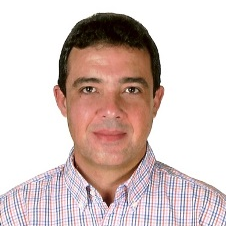Integrated Geophysical Methods for Shallow Aquifers Characterization and Modelling
A special issue of Applied Sciences (ISSN 2076-3417). This special issue belongs to the section "Earth Sciences".
Deadline for manuscript submissions: closed (31 October 2021) | Viewed by 25527
Special Issue Editors
Interests: water resource management; techniques and computational applications for modelling of groundwater dynamics at different spatiotemporal scales and climate conditions; applied geophysics
Special Issues, Collections and Topics in MDPI journals
Interests: applications of near-surface geophysical techniques in modelling of subsurface hydrological processes, using combined and time-lapse approaches at different resolution scales; sustainability of natural, agricultural, and urban groundwater systems
Interests: applications of electrical, seismic, and electromagnetic techniques focused on near-surface characterization in environmental, mining, and hydrogeological research
Special Issues, Collections and Topics in MDPI journals
Special Issue Information
Dear Colleagues,
Shallow aquifers support groundwater-dependent ecosystems, represent the solely water resource in many sparse areas, and are especially threatened by human-induced pollution and global climate change. Integrated near-surface geophysical (NSG) applications have become a part of the holistic strategy for shallow aquifers characterization, which is a necessary step to modelling shallow groundwater dynamics.
NSG techniques permit accurate and fast ground surveys in different hydrogeological environments for different scientific purposes. Moreover, several scientific software platforms having friendly interfaces, robust algorithms for data inversion, and tools for uncertainty analysis are available. For shallow aquifers characterization, electric and electromagnetic techniques are the most widely used methods, despite offering ambiguous interpretations when (1) highly conductive structures and pore-filling fluids (natural and human-induced) exist and (2) subsurface structures subjected to temporal dynamics of water content and dissolved ions are deduced from isolated-in-time surveys.
This Special Issue aims to attract world-leading researchers in applied NSG techniques for shallow groundwater research. The accepted contributions will include: (1) NSG applications as a part of the holistic strategy for shallow aquifer characterization and modelling, (2) Integrated NSG techniques and time-lapse approaches to reduce the ambiguity of interpretations, (3) Innovative theoretical (e.g., formulations) and experimental (e.g., field surveys design and software) developments for characterization and modelling, and (4) Case studies surveying saturated and unsaturated zones for methodological and conceptual purposes. Reviews of (1) state of the art of NSG techniques, (2) software developments, (3) monographies for specific environments such as groundwater-dependent ecosystems and urban areas, and (4) comparisons between geographical areas and technologies are also welcome.
Dr. Francisco Javier Alcalá
Dr. Maria Catarina Paz
Prof. Pedro Martínez-Pagán
Dr. Fernando Monteiro Santos
Guest Editors
Manuscript Submission Information
Manuscripts should be submitted online at www.mdpi.com by registering and logging in to this website. Once you are registered, click here to go to the submission form. Manuscripts can be submitted until the deadline. All submissions that pass pre-check are peer-reviewed. Accepted papers will be published continuously in the journal (as soon as accepted) and will be listed together on the special issue website. Research articles, review articles as well as short communications are invited. For planned papers, a title and short abstract (about 100 words) can be sent to the Editorial Office for announcement on this website.
Submitted manuscripts should not have been published previously, nor be under consideration for publication elsewhere (except conference proceedings papers). All manuscripts are thoroughly refereed through a single-blind peer-review process. A guide for authors and other relevant information for submission of manuscripts is available on the Instructions for Authors page. Applied Sciences is an international peer-reviewed open access semimonthly journal published by MDPI.
Please visit the Instructions for Authors page before submitting a manuscript. The Article Processing Charge (APC) for publication in this open access journal is 2400 CHF (Swiss Francs). Submitted papers should be well formatted and use good English. Authors may use MDPI's English editing service prior to publication or during author revisions.
Keywords
- Near-Surface Geophysical (NSG) Techniques
- Integrated NSG Applications
- Time-Lapse Approaches
- Shallow Aquifers
- Conceptualization and Modelling
- Aquifer Geometry
- Shallow Groundwater Quantity and Quality Dynamics









